Pax Nortona – A Blog by Joel Sax
From the Land of the Lost Blunderbuss
Home - Courage & Activism - Martyrdom 6: Catholic Martyrs, Attis, Pious Frauds, and BDSM
Martyrdom 6: Catholic Martyrs, Attis, Pious Frauds, and BDSM
Posted on March 9, 2004 in Courage & Activism Martyrdom Series Morals & Ethics Myths & Mysticism Strange
 “It would be unfitting to refuse permission to drink the blood of Jesus Christ to one who has testified to Christ with his blood,” wrote Pope Urban VII in the dispensation he granted to allow Jesuit Isaac Jogues to say Mass despite the mutilation of his hands. In 1642, an Iroquois raiding party captured Jogues and his associate Rene Goupil. The two men were beaten with knotted sticks and had their hair and fingernails torn out. Their captors tomahawked Goupil through the skull when they saw the priest making the sign of the cross over the head of a child: they distrusted his European sorcery. Jogues survived to be ransomed by the Dutch at New Amsterdam (now New York City). He crossed the ocean and stumbled across the French countryside until he reached the College of Rennes.
“It would be unfitting to refuse permission to drink the blood of Jesus Christ to one who has testified to Christ with his blood,” wrote Pope Urban VII in the dispensation he granted to allow Jesuit Isaac Jogues to say Mass despite the mutilation of his hands. In 1642, an Iroquois raiding party captured Jogues and his associate Rene Goupil. The two men were beaten with knotted sticks and had their hair and fingernails torn out. Their captors tomahawked Goupil through the skull when they saw the priest making the sign of the cross over the head of a child: they distrusted his European sorcery. Jogues survived to be ransomed by the Dutch at New Amsterdam (now New York City). He crossed the ocean and stumbled across the French countryside until he reached the College of Rennes.
Hearing no news of their colleague since the capture, the Jesuits had started to venerate Father Jogues as a martyr. The porter who opened the door to the starved priest in 1644 took him to be a transient. The stranger told the porter that he bore news from Canada and from “the Fathers there”. He obtained a quick audience with the Father Rector. In a scene well known to North American Catholics, the Rector glanced at the visitor’s papers perfunctorily and asked
if he had come from Canada, as the Brother related. Yes, the man answered, he had been in Canada. Do you know the Fathers there? Very well. Father Vimont? Yes. Father de Brebeuf? Extremely well. And Father Jogues, did you know Father Isaac Jogues?
“I knew him very well indeed,” Isaac answered.
“We have had word that he was captured by the Iroquois. Do you know, is he dead? Or is he still captive? Have those barbarians not murdered him?” Father Rector inquired.
“He is at liberty,” he said, with a queer gulp. “Reverend Father,” Isaac broke into tears, “it is he who speaks to you.”
He fell on his knees, at Father Rector’s feet, kissed his hand, begged his blessing. A cold shiver passed through the Father Rector. Then a burst of joy. He lifted Isaac from his knees, threw his arms about him, kissed him on both cheeks. With a loud voice, that rumbled strangely through the quiet corridor at that hour of sacred silence, he welcomed him and brought him to the community room. The Brother porter, the other Brothers, the Fathers, startled by the excited voices, came hastening into the room. They gathered about Father Isaac; they embraced him and kissed him; they were so overjoyed that they could only gasp sounds, they could scarcely find words. They stripped off his old coat and found a cassock for him. They brought him in triumph to the chapel, where Father Rector, thrilling with the joy of it all, said Mass and gave Father Jogues Communion. All the community was hushed with awe, and in every heart there was offered a prayer of thanksgiving to God for His great mercy.
Pope Urban VII explicitly referred to Father Jogues as a martyr, a label which was not unheard of for a living person. Two saints — St. John and St. Sebastian — were traditionally held to have been martyred twice. (The same fate awaited Father Jogues upon his return to North America in 1646.) The Emperor Domitian ordered his executioners to boil the geriatic apostle in a vat of oil. Tradition holds that John survived the ordeal and was sent to the prison island of Patmos where he composed the Revelation. Many scholars doubt that John survived the first martyrdom and that the Apocalypse of St. John was written by another.
The tale of St. Sebastian’s first martyrdom does not beggar plausibility. This soldier rose to the position of captain of the Praetorian Guard under the Emperor Diocletian who did not know that Sebastian was a Christian. According to a fictitious “Acts” written in the 5th century, Sebastian used his position to bring food, clothing, and solace to Christian prisoners who were developing interesting skin diseases in the Imperial dungeons. When he was found out, the Emperor ordered him executed. His killers lashed him to a post and shot arrows into him, not quite killing him, but making him a homoerotic icon for generations of artists and Catholic schoolboys.
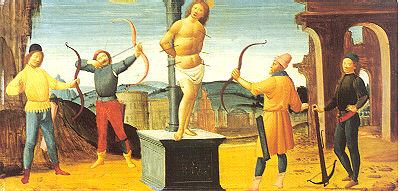
The first martyrdom of St. Sebastian granted him intriguing marks and the reputation as “the homosexual’s saint“. Evelyn Waugh gave the name to the gay scion of the wealthy Catholic family he depicted in Brideshead Revisited. I’ve often heard the syllables pronounced as if they were a leopard intent on eating one’s chastity, man on man. Despite the holiness of the saint, an elegant vulgarity dominates our inner visions when we hear the sibilance and assonance of his name.
The name of Isaac Jogues bears no such associations: the phangelically mutilated do not tend to inspire lust. It was not for beauty that the early church fathers banned the damaged from celebrating the Mass; the prelates were more concerned about the barbarous lengths to which some interpreted scripture and pagan rites in which initiates altered themselves.
In the opinion of the early wisemen, Origen read this passage from Matthew (19:12) too literally, believing that Christ called for men to castrate themselves:
Matthew 19:12 For there are some eunuchs, which were so born from their mother’s womb: and there are some eunuchs, which were made eunuchs of men: and there be eunuchs, which have made themselves eunuchs for the kingdom of heaven’s sake. He that is able to receive it, let him receive it.
Knife-shy male apologists insist that the verse in question pertains to celibacy. Origen later regretted the self-surgery, which he performed to excise any hint of scandal as he taught young girls their catechism. 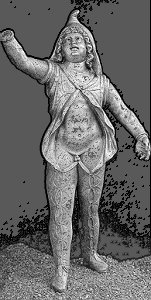 Given the lack of evidence for any Christian other than Origen following the verse so literally, I feel that we can grant a spirit which giveth life to the male gland and that following the letter leads to an assassination of the organ which was neither widely practiced or held as a goal by male Christians.
Given the lack of evidence for any Christian other than Origen following the verse so literally, I feel that we can grant a spirit which giveth life to the male gland and that following the letter leads to an assassination of the organ which was neither widely practiced or held as a goal by male Christians.
Certain pagan rites popular in Asia Minor gave church fathers even more cause to wince. Devotees of Cybele practiced orgiastic amputations and cuttings which must have repulsed observers at least as much as Aztec sacrifices sickened the conquistadors 1500 years later. Some male worshippers sought to emulate Attis, Cybele’s son by some accounts. The explanations for how he ended up with a partial orchidectomy vary: some say that he did it to himself because he was being stalked by a lacivious monster. Another story has it that he was bled to death by the slashing of the vein for his illicit love for the daughter of the king of Phrygia and Lydia, who happened to be named Cybele. Strangest of all is the story that his goddess mother performed the operation after he refused to commit incest with her.
Priests and acolytes commemorated the slaughter of Attis’s manhood in a sainguinary bacchanal that rivaled the carnage of Gibson’s Jesus Chainsaw Massacre:
Rams were sacrificed, their blood used for baptism; initiates unmanned themselvs, and her eunuch priests cut their own flesh in a frenzy. — Cotterell, A Dictionary of World Mythology, p. 21
Uneasiness with the self-mutilation practiced by the Cybelians and other Greek cults as well as confusion over the meaning of Matthew 19:12 may have led to the rule demanding that priests be “perfect” in physiology. Until St. Francis manifested the stigmata, the Church treated such cases with suspicion; witches were accused of causing the wounds in a famous case brought before Archbishop Stephen Langton, Archbishop of Canterbury. When Padre Pio first manifested the wounds of Christ, his superiors prohibited him from saying Mass.
Skeptics continue to warn against accepting these cases as authentic: Padre Pio’s wounds, for example, disappeared during his last sickness when he was apparently too weak to keep drilling holes through his hands. Skillful debunker Joe Nickell investigated the case of Katya Rivas, a Bolivian stigmatist:
Rivas’s wounds were never seen in the act of spontaneously issuing but instead were shown in incremental shots after each appearance–just as they would if self-inflicted during periods of concealment. Among other suspicious elements were the mismatching of “entrance” and “exit” wounds, those on the left foot being far out of alignment. Also, those on the palms and soles of the feet were, as far as could be seen, only smears of blood.
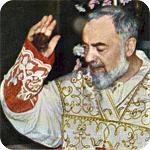
One wonders if the famous wounds of St. Francis of Assisi and other famous stigmatists would have withstood Nickell’s rigorous, scientific probing?
These pious frauds aren’t trying to make a buck off the public. Like St. Anthony of Egypt who yearned for but was denied the witness of his faith through execution by pagan authorities, stigmatists attempt to exhibit meaningful suffering, both for the sake of their own belief and for that of others. The case of bedridden Audrey Santo — in whose presence statues began to bleed olive oil after a visit to Medjugorje where the Virgin Mary told her that she’d been picked to serve as a victim soul — bears mentioning here. Nickell concluded that the parents caused the manifestations and offered this explanation for why:
People seem to hunger for some tangible religious experience, and wherever there is such profound want there is the opportunity for what may be called “pious fraud.” Money is rarely the primary motive, the usual impetus being to seemingly triumph over adversity, renew the faith of believers, and confound the doubters. An end-justifies-the-means attitude may prevail, but the genuinely religious and the devoutly skeptical may agree on one thing, that the truth must serve as both the means and the end. Ultimately, neither science nor religion can be served by dishonesty.
It’s not that these impersonators promote evil; they want to impress God and the Church with their suffering.
The question of whether the Church’s gruesome iconography inspires teenagers to cut themselves is not an issue I intend to talk about. Psychiatrists enumerate three reasons for the practice, all of which suggest a desire on the part of the self-mutilators to prove themselves real:
- Release of tension due to a stressful state
- Granting of a sense of self control in situations where they have no control, such as bullying
- Validation of suffering that otherwise leaves no marks, such as child abuse
Afficianados of BDSM certainly hearken back to the imagery of the martyrs when constructing what Foucault called their experiments in the nature of power. 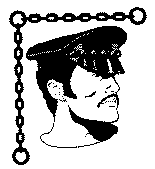
Crucifixions, hangings, burnings with candle wax, and techniques too sexually grosteque to describe figure into their fantasy worlds. Steven Marcus averred in his classic The Other Victorians: A Study of Sexuality and Pornography in Mid-Nineteenth-Century England that pornography as an “art” depends on lies. From what I have seen and read, BDSM invites the reader and the viewer to believe in satanic rituals, extensive white slavery, and binding contracts that allow fantastically wealthy “owners” to wreak shavings, mutilations, and slavery on the unwary. Subjects of stories include witches who dine on young women; homosexual or lesbian police officers who harass motorists; famous writers, musicians, or actors taken captive by fans; “pony-girls” who are kept in stables and run outside with a bit in their mouthes; and molestors so anonymously powerful that they keep castles stocked with their captives.
“Real-life” slaves report more banal experiences:
When I feel really hurt by something he said or did, my world gets shaken up because I have no defenses against him and he can hurt me badly very easily. The longer it goes on, the worse it is. To get us back on track, he uses the things that he knows works for us — more domming, shorter leash, good scenes. All that stuff sets my world right again, and makes us *both* feel better.
“Reducing my world to being an object to be fucked certainly got me to focus on my place in his universe,” she writes elsewhere, in a strange recasting of the psycho-mystical notion of putting our sorrows into the context of vastness of space. Despite these protests of catharsis, bondage runs counter to classic definitions of martyrdom. In the latter case, the state of grace necessary to accept pain precedes the torture, the mutilation, the murder. In the latter, victims report an imposition of a mindset that they often resist. To say that they do this for sheer sexual thrill may trivialize the acts and the thinking. BDSM afficianados appear to share much in common with teenaged girls who cut: in a world where no one can see the pain of your relationship with your significant other, the reasoning goes, it’s nice to have some marks.
Proponents of BDSM often insist on their right to live differently from others. What troubled Father Damien of Molokai was that he did not share the sufferings of his congregation. In 1873, Damien took the assignment of ministering to the leper colony on Molokai. Here he moved among the victims of Hansen’s Disease, a fair face among those afflicted by the loss of their eyebrows, thickening of nerves, lumpy earlobes, and large rings on the skin that were without feeling within their bounds. His parishioners were both disfigured and ostracized. Fear of the disease kept even Damien’s bishop from approaching the island: when Damien wanted to confess, he had to shout it from a rowboat pulled alongside the prelate’s ship.
One morning, Damien awoke to find the first signs of mycobacterium leprae infection. He rushed to the chapel and rang the bell, exclaiming joyfully “I am like you! I am like you!” The cross had come to Damien. He never left Molokai or protested his assignment there.
Father Damien fits the standards of sainthood which were applied in the early days of the Church when martyrdom was the requirement for sainthood. He went to Molokai, knowing the danger, paid the price, retained his faith to the end. His sacrifice plays a central role in the interpretation at Kalaupapa National Historical Park, a secular monument to the piety of a true saint.
Yet his canonization has been sidetracked pending a miracle. The Jew-hating Maximilian Kolb and the Falangist Josemaria Escriva de Balaguer whose Opus Dei organization encourages behavior in fanatical devotion to Christ that would titillate the most jaded of BDSM lovers have been granted celestial status on the basis of Kolb’s martyrdom on behalf of a Gentile in a concentration camp and Escriva’s purported role in the remission of tumors of a Carmelite nun; these honors despite the fact that neither has been dead nearly as long as Father Damien.
When a true saint is left waiting for the recognition he deserves because of Right-Wing politics, something is very wrong with the rock upon which the edifice is founded. Martyrdom remains a test that even skeptics accept as genuine and verifiable. The Church should depart from partisan politics and questionable medical diagnoses in its search for examples that the rest of us should live by.
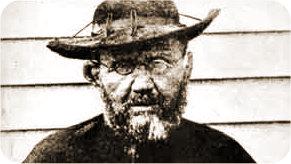
Next: The Passion of Christ and others

